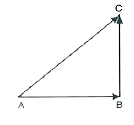If XΔY=ϕ, then which of the following is true ?
X⊂Y
X and Y are disjoint
X= Y
Y⊂X
The correct Answer is:C
To solve the question "If XΔY=φ, then which of the following is true?", we will use the definition of the symmetric difference of two sets and analyze the options provided.
1. Understanding the Symmetric Difference:
The symmetric difference of two sets X and Y, denoted as XΔY, is defined as:
XΔY=(X∪Y)−(X∩Y)
This means it includes all elements that are in either X or Y but not in both.
2. Given Condition:
We are given that XΔY=ϕ, where ϕ represents the empty set. This implies that there are no elements in the symmetric difference of X and Y.
3. Interpreting the Condition:
If XΔY=ϕ, it means:
(X∪Y)−(X∩Y)=ϕ
This indicates that every element that is in X or Y must also be in both X and Y. Therefore, there are no elements that are exclusively in X or exclusively in Y.
4. Conclusion from the Condition:
The only way for the symmetric difference to be empty is if X and Y contain exactly the same elements. Thus, we conclude that:
X=Y
5. Evaluating the Options:
Now let's evaluate the options provided:
- Option 1: X⊆Y (This is true, but not sufficient alone)
- Option 2: X and Y are disjoint (This is false, since they are equal)
- Option 3: X=Y (This is true)
- Option 4: Y⊆X (This is true, but not sufficient alone)
The only option that directly states the relationship we derived is Option 3: X=Y.
Final Answer:
The correct answer is Option 3: X=Y.
The symmetric difference of two sets X and Y, denoted as XΔY, is defined as:
XΔY=(X∪Y)−(X∩Y)
This means it includes all elements that are in either X or Y but not in both.
We are given that XΔY=ϕ, where ϕ represents the empty set. This implies that there are no elements in the symmetric difference of X and Y.
If XΔY=ϕ, it means:
(X∪Y)−(X∩Y)=ϕ
This indicates that every element that is in X or Y must also be in both X and Y. Therefore, there are no elements that are exclusively in X or exclusively in Y.
The only way for the symmetric difference to be empty is if X and Y contain exactly the same elements. Thus, we conclude that:
X=Y
Now let's evaluate the options provided:
- Option 1: X⊆Y (This is true, but not sufficient alone)
- Option 2: X and Y are disjoint (This is false, since they are equal)
- Option 3: X=Y (This is true)
- Option 4: Y⊆X (This is true, but not sufficient alone)
The correct answer is Option 3: X=Y.
Topper's Solved these Questions
- SETSBOOK - PEARSON IIT JEE FOUNDATIONCHAPTER - SETSEXERCISE - Level 2
21 Videos
- SETSBOOK - PEARSON IIT JEE FOUNDATIONCHAPTER - SETSEXERCISE - Level 3
8 Videos
- SETSBOOK - PEARSON IIT JEE FOUNDATIONCHAPTER - SETSEXERCISE - Essay Type Qns
5 Videos
- REAL NUMBERS AND LCM AND HCF BOOK - PEARSON IIT JEE FOUNDATIONCHAPTER - REAL NUMBERS AND LCM AND HCF EXERCISE - level -11
1 Videos
- SIMPLE INTEREST AND COMPOUND INTEREST BOOK - PEARSON IIT JEE FOUNDATIONCHAPTER - SIMPLE INTEREST AND COMPOUND INTEREST EXERCISE - CONCEPT APPLICATION Level 3
9 Videos
Similar Questions
Knowledge Check
If A and B are two sets such that A×B=ϕ, then which of the following must be true ?
AA=ϕ and B≠ϕBA=ϕ and/or B=ϕCA≠ϕ and B=ϕDA=ϕ and B=ϕLet 'P' be an interior point of ΔABC. If ∠A=45∘,∠B=60∘ and ∠C=75∘. If X=area of ΔPBC,Y= area of ΔPAC and Z = area of ΔPAB, then which of the following ratios is/are true ?
AIf P is the centroid, then X : Y : Z is 1 : 1 : 1BIf P is the incentre, then X : Y : Z is 2:√6:(√3+1)CIf P the orthocentre, then X : Y : Z is 1:√3:(2+√3)DIf P is the circumcentre, then X : Y : Z is 2:√3:1If the ortho-centre of a triangle ABC is B then which of the following is true?
AAC2=AB2+BC2BAC2>AB2+BC2CAC2<AB2+BC2DNone of these
In a right-angled triangle ABC, if angle B=90°, then which of the following is true?
View SolutionIn ΔABC, which of the following is not true ?

View SolutionWhich of the following is true in a triangle ABC
View SolutionIf x>5 and y<−1, then which of the following statements is true ?
View SolutionIf A×B=ϕ then which of the following is necessarily true ?
View Solution
